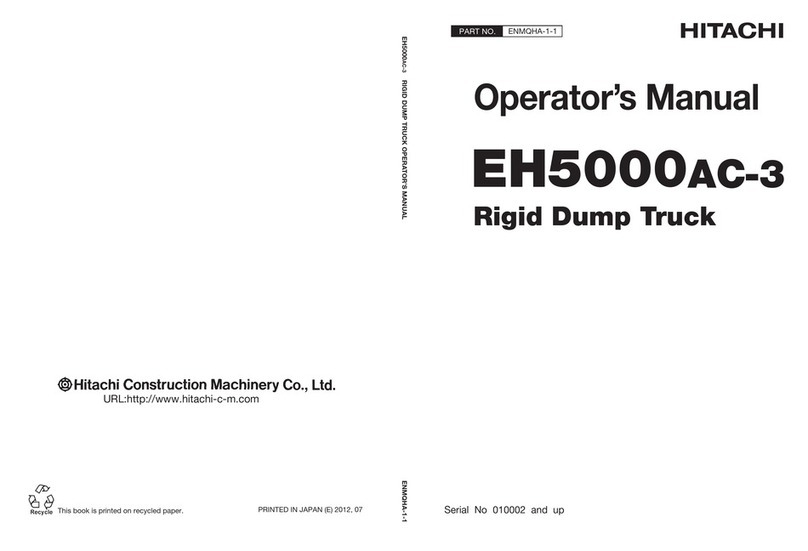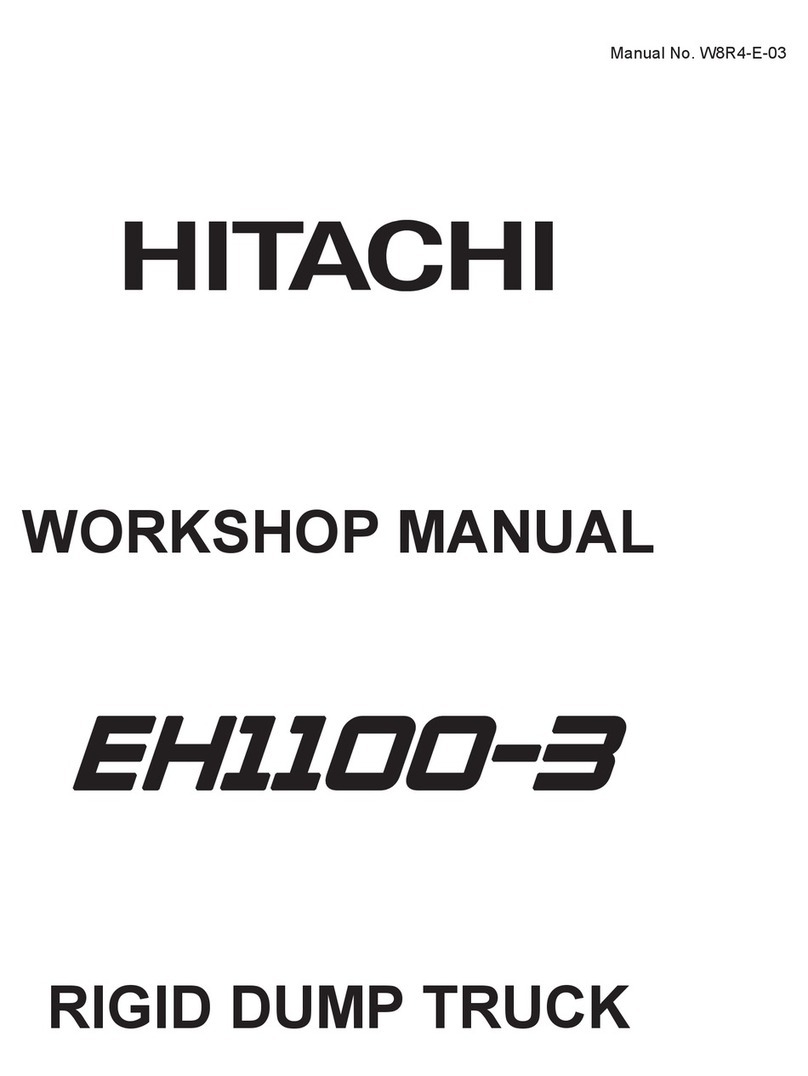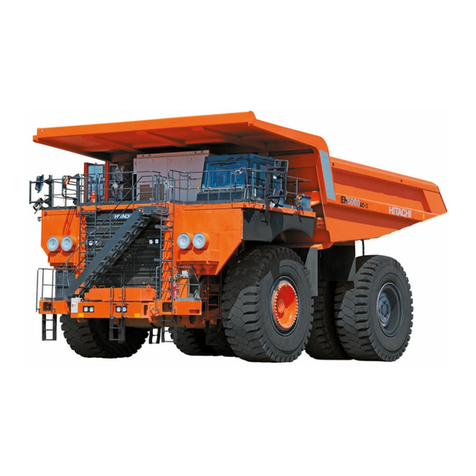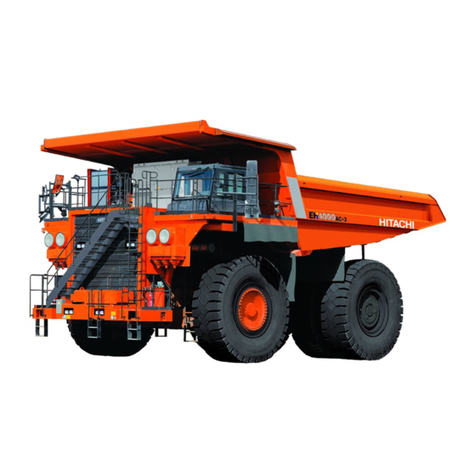
INTRODUCTION
IN-01
To The Reader
Additional References
Manual Composition
Page Number
This manual is written for an experienced technician to
provide technical information needed to maintain and
repair this machine.
yBe sure to thoroughly read this manual for correct
product information and service procedures.
Please refer to the other materials (operator’s manual,
parts catalog, engine technical material and Hitachi
training material etc.) in addition to this manual.
This manual consists the Technical Manual, the Workshop
Manual and the Engine Manual.
yInformation included in the Technical Manual:
Technical information needed for redelivery and delivery,
operation and activation of all devices and systems,
operational performance tests, and troubleshooting
procedures.
Each page has a number, located on the center lower part
of the page, and each number contains the following
information:
Example:
yTechnical Manual: T 1-3-5
T Technical Manual
1 Section Number
3 Group Number
5 Consecutive Page Number for Each Group
yIf you have any questions or comments, at if you found
any errors regarding the contents of this manual,
please contact using “Service Manual Revision Request
Form”at the end of this manual. (Note: Do not tear off
the form. Copy it for usage.):
xPublications Marketing & Product Support Hitachi
Construction Machinery Co. Ltd.
xTEL: 81-29-832-7084
xFAX: 81-29-831-1162
yInformation included in the Workshop Manual:
Technical information needed for maintenance and
repair of the machine, tools and devices needed for
maintenance and repair, maintenance standards, and
removal / installation and assemble / disassemble
procedures.
yInformation included in the Engine Manual:
Technical information needed for redelivery and delivery
and maintenance and repair of the machine, operation
and activation of all devices and systems, troubleshooting
and assemble / disassemble procedures.
yWorkshop Manual: W 1-3-2-5
W Workshop Manual
1 Section Number
3 Group Number
2 Sub Group Number
5 Consecutive Page Number for Each Sub Group
Find manuals at https://best-manuals.com































